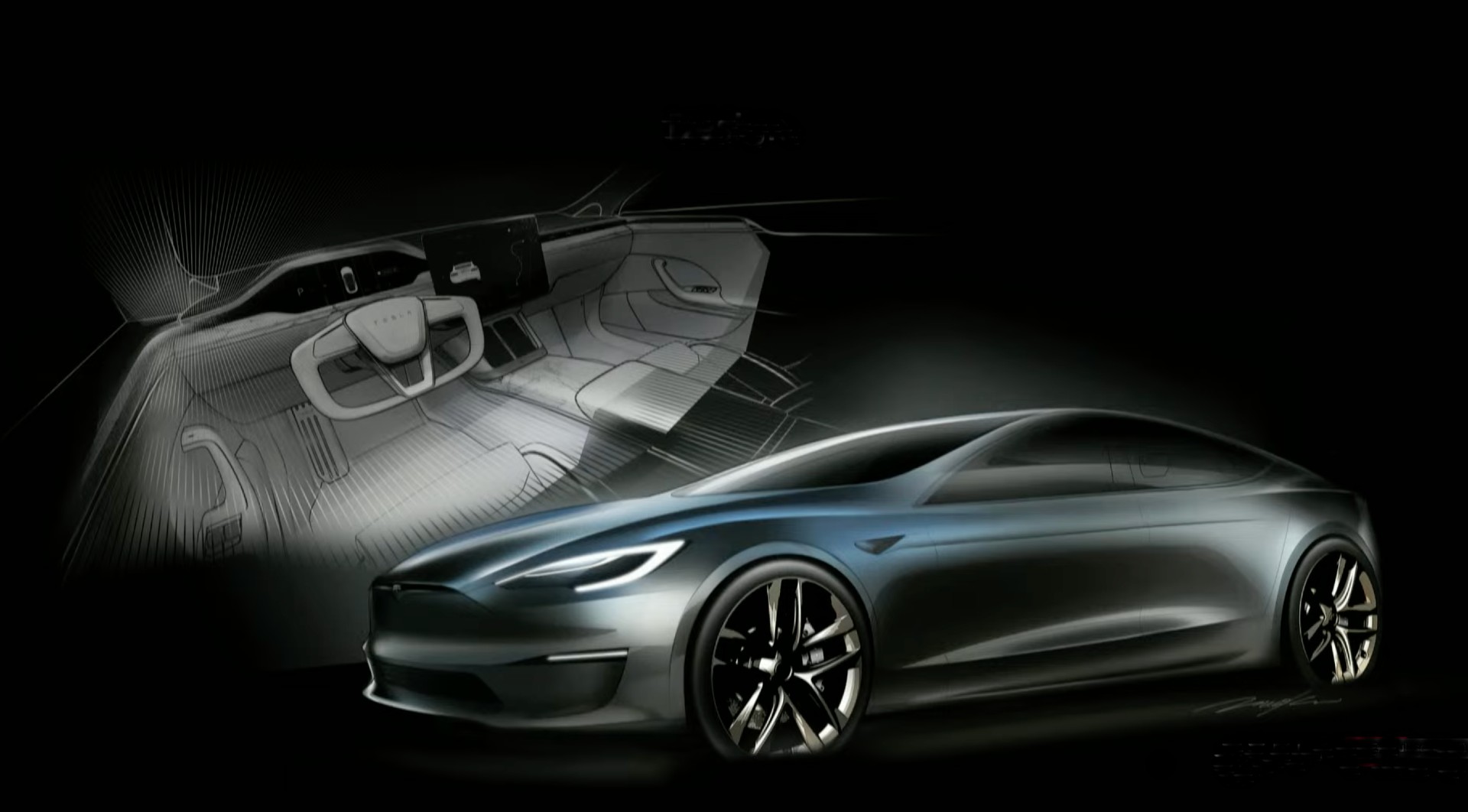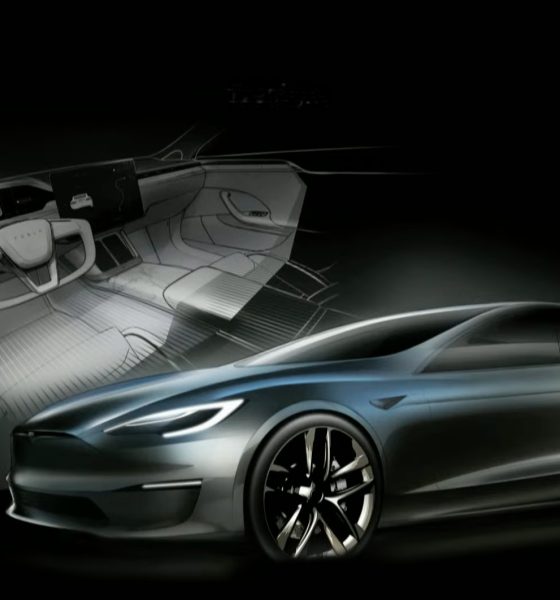

Investor's Corner
Morgan Stanley outlines Tesla’s 8 key drivers for further expansion
Recently, Morgan Stanley (MS) released a note on Tesla’s future capacity expansion. The note discussed key drivers that would push Tesla’s growth further in terms of model/segment and factory footprint. Each driver is discussed below.
Produce in markets where they want to sell & diversify outside China
“Cars don’t ship like iPhones, and there are benefits in high localization,” wrote the Morgan Stanley analysts. The investment bank expects “to see significant diversification going forward.”
Gigafactory Shanghai has proven to be an excellent move for Tesla. Tesla China has significantly contributed to the company’s growth since the Shanghai factory started operations. Giga Berlin and Giga Texas are poised to have the same impact when they are operational.
Make each new factory its ‘best’ factory
The Morgan Stanley note stated that there may be room to improve Tesla’s factories, specifically design, cost, and automation.
Tesla always strives to improve and be more efficient. The company’s constant push to improve can be seen in the slight differences and improvements in each Gigafactory. For example, Tesla Giga Shanghai’s layout and design seem based on the GA4 tent the company built when the company was ramping Model 3 production.
Giga Berlin seems to follow the same design, but Tesla has invested in some impressive machines for production in Europe. For instance, Elon Musk has talked about Giga Berlin’s paint shop for quite some time, describing it as one of the most advanced paint shops in the world.
Then there is Giga Texas, which will be Tesla’s Cybertruck factory. The Cybertruck’s unique stainless steel exoskeleton would probably introduce some tough production challenges that would undoubtedly bring about solutions in ways only Tesla could solve.
Spread bets across national regimes
Morgan Stanley writes that “the industry has learned some recent valuable lessons on overdependence on concentrated/extended supply chains.”
In the last earnings call, Elon Musk shared that Tesla faced some supply chain challenges in the first quarter, which the team handled well. Some rumors suggest that Tesla may be interested in investing in its own factory for chips to avoid similar supply chain challenges in the future. Tesla also stepped forward to help a global shipping company with its vast amounts of shipping data, hinting that Tesla is learning more about supply chain processes.
Tesla’s drivers for technological growth
Morgan Stanley lists two drivers related to Tesla tech that could help the company’s expansion. One tech-related driver states Tesla should set technology standards in major regions by getting there first.
The second driver related to tech states that battery economics drive expansion. “We believe battery vertical integration co-located with final assembly ideally suited to volume of 500k to 1mm units per plant,” noted the Wall Street firm.
Drivers for Tesla’s global market expansion
In its note, Morgan Stanley wrote that Tesla should aggressively reduce prices to prevent/delay encroachment from big tech. The note specifically mentions the Apple Car, calling it the “stalking horse.” Granted, Apple might be able to develop software for vehicles that is much better than software found in the cars of Tesla competitors. However, mass-producing a vehicle would be a challenge for a tech company like Apple with no car production experience.
The Wall Street firm also lists that Tesla partnerships could be a natural outcrop of the company’s global/scaled strategy. “We see scope for Tesla to work with other OEMs (both legacy and startups) in areas such as batteries, full EV skateboards, OS, and other products and services.
Tesla and Elon Musk have always been open to working with other automakers to drive its main goal forward: to expedite the move towards a solar electric economy.
The Teslarati team would appreciate hearing from you. If you have any tips, email us at tips@teslarati.com or reach out to me at maria@teslarati.com.

Investor's Corner
Tesla stock closes at all-time high on heels of Robotaxi progress

Tesla stock (NASDAQ: TSLA) closed at an all-time high on Tuesday, jumping over 3 percent during the day and finishing at $489.88.
The price beats the previous record close, which was $479.86.
Shares have had a crazy year, dipping more than 40 percent from the start of the year. The stock then started to recover once again around late April, when its price started to climb back up from the low $200 level.
This week, Tesla started to climb toward its highest levels ever, as it was revealed on Sunday that the company was testing driverless Robotaxis in Austin. The spike in value pushed the company’s valuation to $1.63 trillion.
Tesla Robotaxi goes driverless as Musk confirms Safety Monitor removal testing
It is the seventh-most valuable company on the market currently, trailing Nvidia, Apple, Alphabet (Google), Microsoft, Amazon, and Meta.
Shares closed up $14.57 today, up over 3 percent.
The stock has gone through a lot this year, as previously mentioned. Shares tumbled in Q1 due to CEO Elon Musk’s involvement with the Department of Government Efficiency (DOGE), which pulled his attention away from his companies and left a major overhang on their valuations.
However, things started to rebound halfway through the year, and as the government started to phase out the $7,500 tax credit, demand spiked as consumers tried to take advantage of it.
Q3 deliveries were the highest in company history, and Tesla responded to the loss of the tax credit with the launch of the Model 3 and Model Y Standard.
Additionally, analysts have announced high expectations this week for the company on Wall Street as Robotaxi continues to be the focus. With autonomy within Tesla’s sights, things are moving in the direction of Robotaxi being a major catalyst for growth on the Street in the coming year.
Elon Musk
Tesla needs to come through on this one Robotaxi metric, analyst says
“We think the key focus from here will be how fast Tesla can scale driverless operations (including if Tesla’s approach to software/hardware allows it to scale significantly faster than competitors, as the company has argued), and on profitability.”

Tesla needs to come through on this one Robotaxi metric, Mark Delaney of Goldman Sachs says.
Tesla is in the process of rolling out its Robotaxi platform to areas outside of Austin and the California Bay Area. It has plans to launch in five additional cities, including Houston, Dallas, Miami, Las Vegas, and Phoenix.
However, the company’s expansion is not what the focus needs to be, according to Delaney. It’s the speed of deployment.
The analyst said:
“We think the key focus from here will be how fast Tesla can scale driverless operations (including if Tesla’s approach to software/hardware allows it to scale significantly faster than competitors, as the company has argued), and on profitability.”
Profitability will come as the Robotaxi fleet expands. Making that money will be dependent on when Tesla can initiate rides in more areas, giving more customers access to the program.
There are some additional things that the company needs to make happen ahead of the major Robotaxi expansion, one of those things is launching driverless rides in Austin, the first city in which it launched the program.
This week, Tesla started testing driverless Robotaxi rides in Austin, as two different Model Y units were spotted with no occupants, a huge step in the company’s plans for the ride-sharing platform.
Tesla Robotaxi goes driverless as Musk confirms Safety Monitor removal testing
CEO Elon Musk has been hoping to remove Safety Monitors from Robotaxis in Austin for several months, first mentioning the plan to have them out by the end of 2025 in September. He confirmed on Sunday that Tesla had officially removed vehicle occupants and started testing truly unsupervised rides.
Although Safety Monitors in Austin have been sitting in the passenger’s seat, they have still had the ability to override things in case of an emergency. After all, the ultimate goal was safety and avoiding any accidents or injuries.
Goldman Sachs reiterated its ‘Neutral’ rating and its $400 price target. Delaney said, “Tesla is making progress with its autonomous technology,” and recent developments make it evident that this is true.
Investor's Corner
Tesla gets bold Robotaxi prediction from Wall Street firm
Last week, Andrew Percoco took over Tesla analysis for Morgan Stanley from Adam Jonas, who covered the stock for years. Percoco seems to be less optimistic and bullish on Tesla shares, while still being fair and balanced in his analysis.

Tesla (NASDAQ: TSLA) received a bold Robotaxi prediction from Morgan Stanley, which anticipates a dramatic increase in the size of the company’s autonomous ride-hailing suite in the coming years.
Last week, Andrew Percoco took over Tesla analysis for Morgan Stanley from Adam Jonas, who covered the stock for years. Percoco seems to be less optimistic and bullish on Tesla shares, while still being fair and balanced in his analysis.
Percoco dug into the Robotaxi fleet and its expansion in the coming years in his latest note, released on Tuesday. The firm expects Tesla to increase the Robotaxi fleet size to 1,000 vehicles in 2026. However, that’s small-scale compared to what they expect from Tesla in a decade.
Tesla expands Robotaxi app access once again, this time on a global scale
By 2035, Morgan Stanley believes there will be one million Robotaxis on the road across multiple cities, a major jump and a considerable fleet size. We assume this means the fleet of vehicles Tesla will operate internally, and not including passenger-owned vehicles that could be added through software updates.
He also listed three specific catalysts that investors should pay attention to, as these will represent the company being on track to achieve its Robotaxi dreams:
- Opening Robotaxi to the public without a Safety Monitor. Timing is unclear, but it appears that Tesla is getting closer by the day.
- Improvement in safety metrics without the Safety Monitor. Tesla’s ability to improve its safety metrics as it scales miles driven without the Safety Monitor is imperative as it looks to scale in new states and cities in 2026.
- Cybercab start of production, targeted for April 2026. Tesla’s Cybercab is a purpose-built vehicle (no steering wheel or pedals, only two seats) that is expected to be produced through its state-of-the-art unboxed manufacturing process, offering further cost reductions and thus accelerating adoption over time.
Robotaxi stands to be one of Tesla’s most significant revenue contributors, especially as the company plans to continue expanding its ride-hailing service across the world in the coming years.
Its current deployment strategy is controlled and conservative to avoid any drastic and potentially program-ruining incidents.
So far, the program, which is active in Austin and the California Bay Area, has been widely successful.








